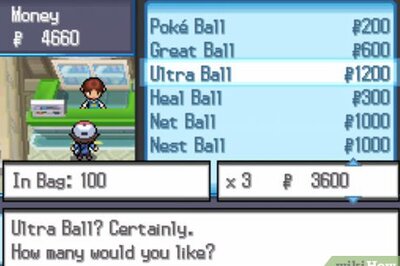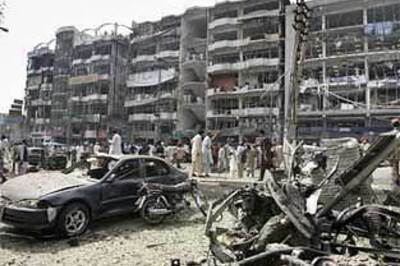
views
Mumbai: At 1:30 pm on Wednesday, Rashid (31) went through all the formality of collecting dead bodies at JJ hospital. The bodies belonged to his two kids, aged seven and four.
They had come to visit Rashid in Mumbai, along with their mother, during their school vacation but, on Tuesday, as Rashid left for work after waking up the kids, and they finished up their breakfast in Rashid's rented apartment in a century-old building at Dongri, the house collapsed, killing not only the two kids but also 11 other residents. Several are still injured and in the hospital, including Rashid's wife.
As Rashid completed all the formalities, his relatives sat in silence, huddled up in a corner of the courtyard outside JJ hospital's casualty ward. A medical official pointed out that on Tuesday the casualty ward was bustling with 24 doctors, including the dean, as one by one the victims of the building collapse were being brought in, but things are 'back to normal' a day after the incident.
Most of the patients are stable now and have been shifted to regular wards, some have also been discharged. Of the victims still admitted at the hospital are four members of the Salmani family.
"Naved (Salmani) told me that when the building fell, his fingers and head were the only things not buried under the rubble. He stayed like that, conscious, waiting for help to arrive," said Huzaifa Mullah, a relative of the Salmani family.
"The rescue workers pulled him out. His mother, Firdos, was also stuck under the debris. It took a few hours to drag her out as well. Firdos' leg is fractured and she, along with her daughter Zeenat, granddaughter Nasra, and son Naved are still at the hospital," he added.
Four other of the same family -- Muzamil, Sana, Zuber and Ibrahim -- were killed in the incident. Mullah said that the Salmani family, along with the guests (total eight members) lived in an apartment smaller than 200 sq feet, but now even that is gone.
"They (rescue workers) were piling up all the belongings of different families who occupied the building in an empty room nearby. We will have to go and check if anything from Naved's house is kept there. I found a few of their clothes, so I have kept them in my own house," added Mullah.
There are many reports floating around that the building was illegal, and notice was issued to vacate, but Mullah said he cannot say for certain if the Salmani family knew about it. However, he revealed that the family was about to shift out of the building soon.
"Naved and his family were planning to shift and had already leased a home at Mira road. They had made the down payment and were supposed to move into the new place on the 22nd of this month," said Mullah.
The rescue operations at Dongri were called off on Wednesday evening. Until 3 pm yesterday, the rescue team was still searching for one missing person. "We fear one victim is still missing, so we are looking for that person," said fireman Bharat Bhogle.
Recounting the horror of the incident, the fireman said, "On Tuesday, as I walked in, I saw that the building had turned into a pile of rubble. We quickly started work and the first person I pulled out was a woman. Thankfully, she was alive. Next to her were two boys, but I couldn't tell if they were dead or alive," he added.
Several women, worked on the ground, digging up rubble, and looking for life until 6 pm last evening. “A cop fished out a child from debris and carried him in his arms,” said one of the BMC earthmovers, Maria Remit Mascarenas. She added that she cannot get the image out of her head. "As he (the cop) walked out, a woman followed him, crying inconsolably. It looked like she was the mother of the child," she said.
"We heard a loud noise when the building fell," recounts Ahmed Kareem Tamboli, a local of Dongri. "But, I am too old, so I cannot walk very well. Two young boys from my building rushed out to help...The locals did as much as they could."
Another Dongri resident, Mohammad Naushad said that although he did not hear the building fall, it was the noises and shouts of the people that startled him. "I knew Israr master, who lived on the ground floor of that building, very well. I kept calling him, but he didn't answer his phone. Later, his dead body was discovered," said Naushad. "As much as we could, we helped. Then the cops and fire brigade took over, and we stepped aside," he added.
In a city like Mumbai, life changes in an instant, but it goes back to normal even faster. Mumbai has a way of 'going back to normal' when floods happen, bridges collapse, buildings catch fire. For years, we have been calling it the 'Mumbai spirit' -- our capacity to overcome any tragedy -- and patted ourselves on the back, but at some point, maybe it will serve us well to ask ourselves if it is truly the Mumbai spirit or just plain apathy that we forget the victims and tragedies so quickly?
There are so many Good Samaritans in this city who offer shelter to strangers on rainy days and form human chains to help BMC dig up rubble and look for missing people, as the locals of Dongri did on Tuesday. Where do they disappear the very next day?
On Wednesday, a day after the building collapse took 13 lives, many at Dongri had already moved on. Few ministers still visited Tendel Street, Dongri, and a few mediapersons hung around the entrance to take their bytes, clogging up the narrow lanes, much to the annoyance of the locals. The main road was blocked till evening because of the rescue work, which meant many of the locals had to take detours to reach their homes or to their work, and they were, like all Mumbaikars, in a hurry.
But, in our hurry, before we put the Dongri building collapse behind us as a one-off incident, where a dilapidated building which was supposed to evacuated and demolished fell, there are perhaps a few things that we should take note of. As BMC (Brihanmumbai Municipal Corporation) and MHADA (Maharashtra Housing and Area Development Authority) play their blame game, let us remember that it isn't an isolated incident. In 2017, a similar incident happened in Bhindi Bazaar, killing over 30 people. Much like the Dongri incident, Rs 5 lakh compensation was announced along with an enquiry to look into the matter.
But, despite these enquiries that we hear will happen after every such tragedy, the results of these enquiries are rarely known. In the meantime, such incidents continue to happen, costing lives, homes and property. A media report claimed that between 1971 and 2018, almost 894 people died in accidents involving MHADA buildings. Another report by The Indian Express says that BMC in reply to an RTI had said that from 2013 till date, there had been 2,704 crashes which included buildings and wall collapse (like the one that happened in Malad earlier this month) as well as balconies, or parts of homes falling apart.
Dongri is a labyrinth of rickety buildings and the dark dank alleyways which connect them allow only one person to pass at a time. But Dongri isn't the only area where such buildings, which many news reports have confirmed are illegal, are found. In nearby localities of Nishanpara cross lane and Chavalwali Gali, such constructions also exist. Most of these localities are heavily crowded. In fact, the small B ward has the highest population density in Mumbai -- the entire locality packs 1.28 lakh of the population into only 2.84 sq km, increasing the risks of casualties considerably if incidents such as Dongri building collapse are to happen again in future.
Don't look away Mumbai, we surely cannot afford to look away.




















Comments
0 comment